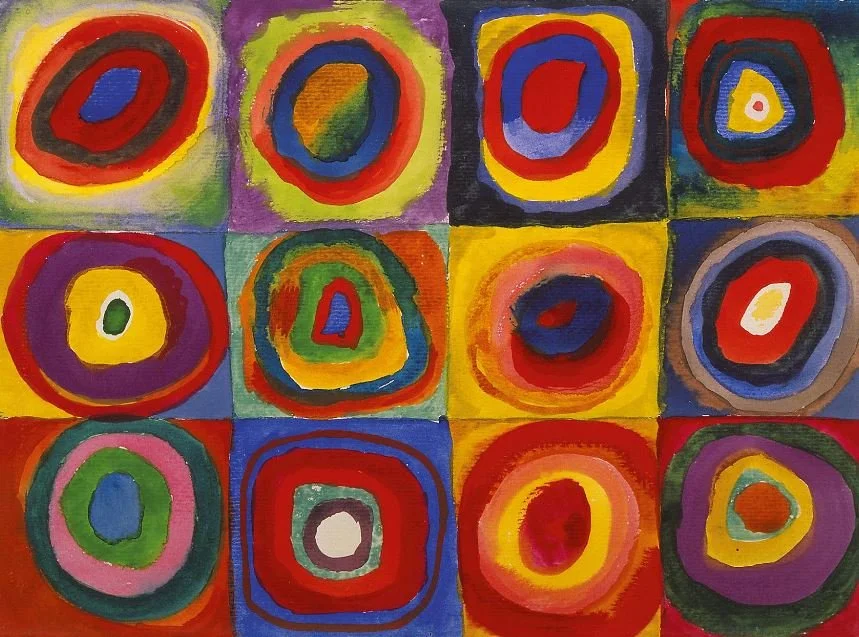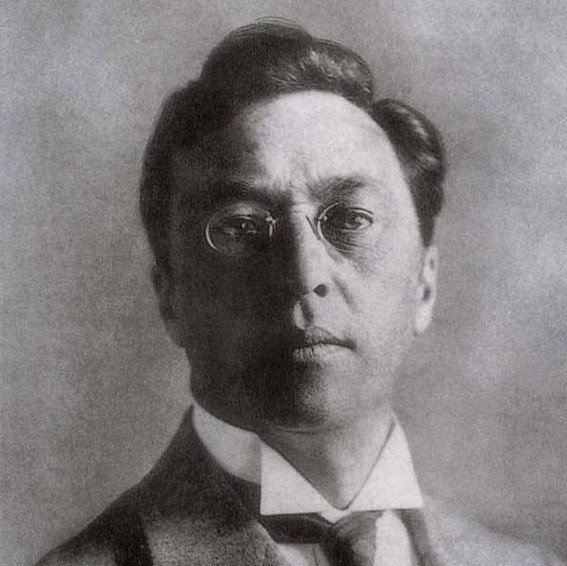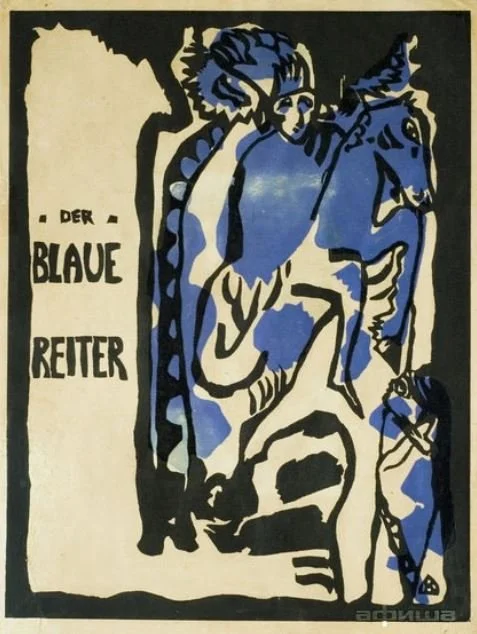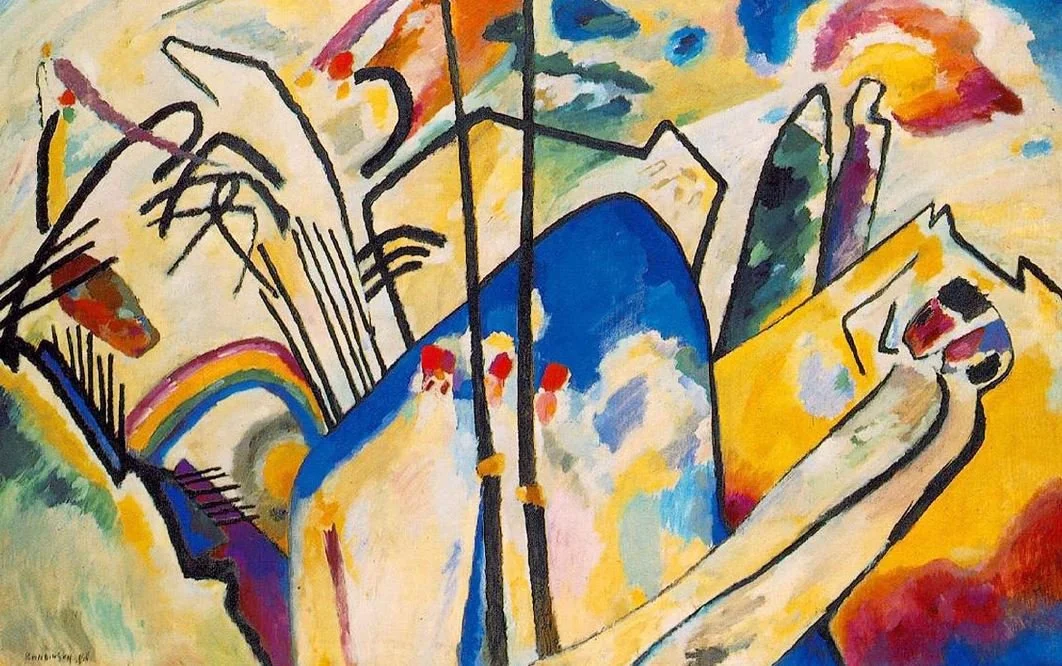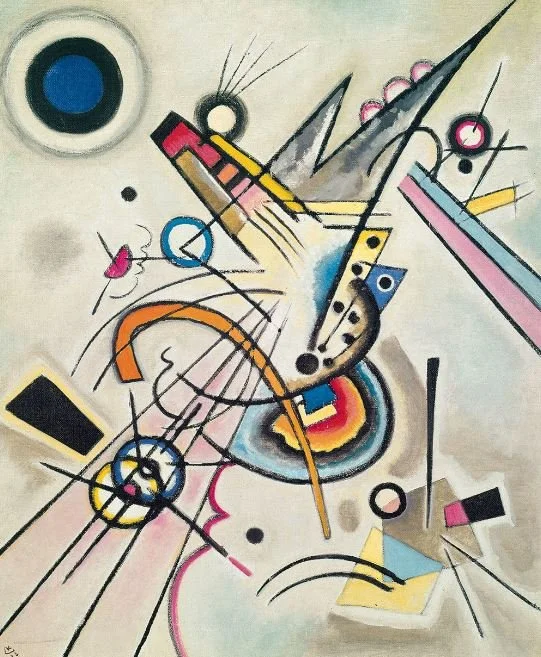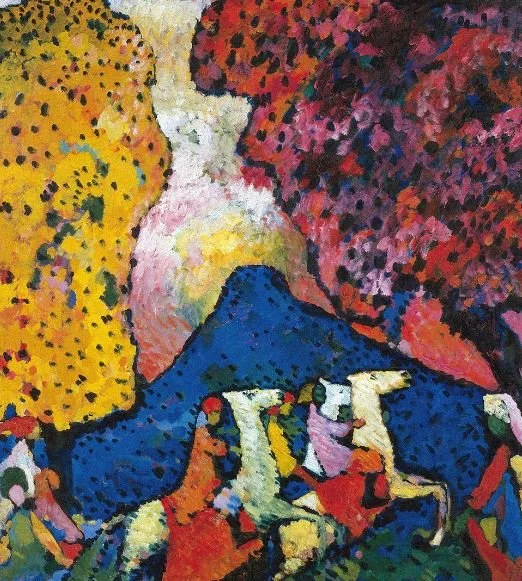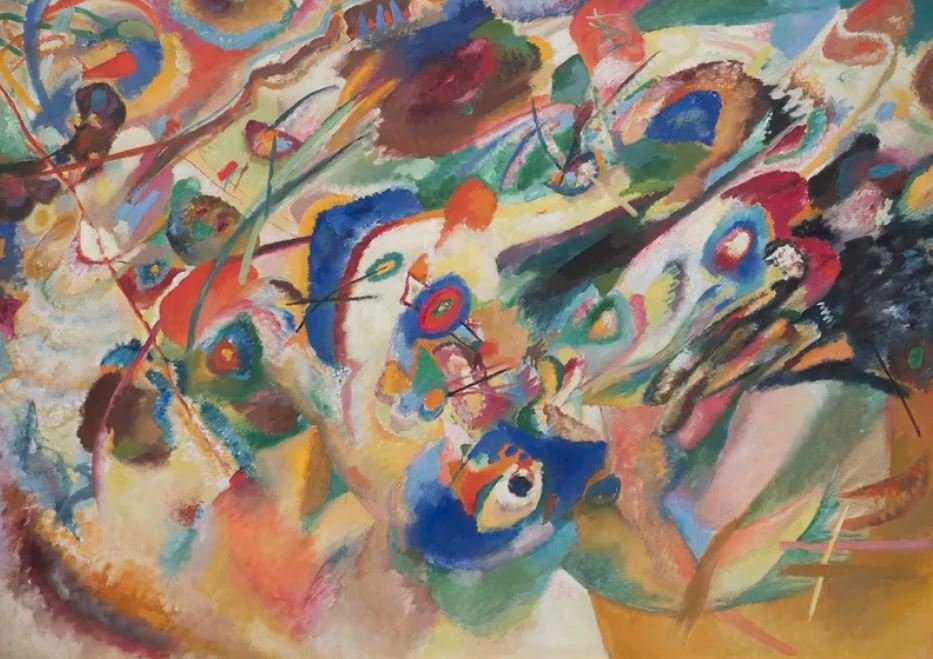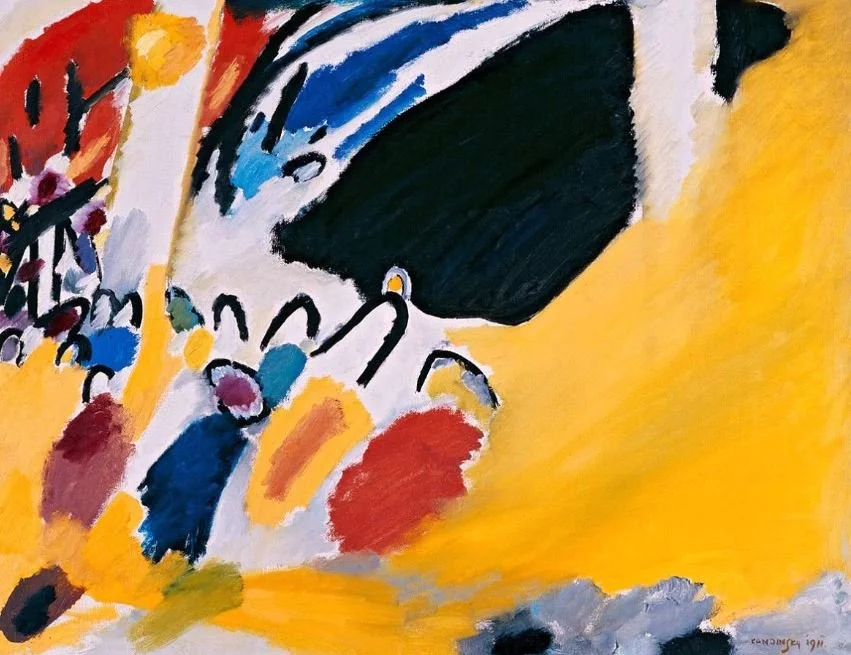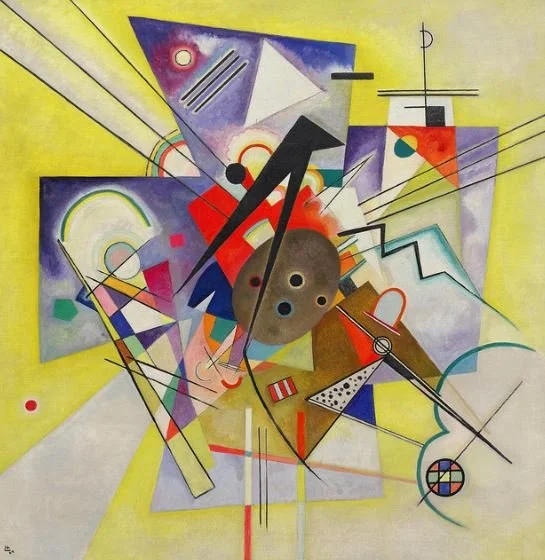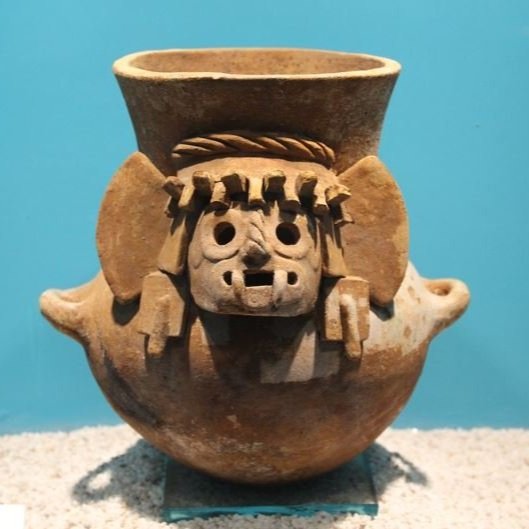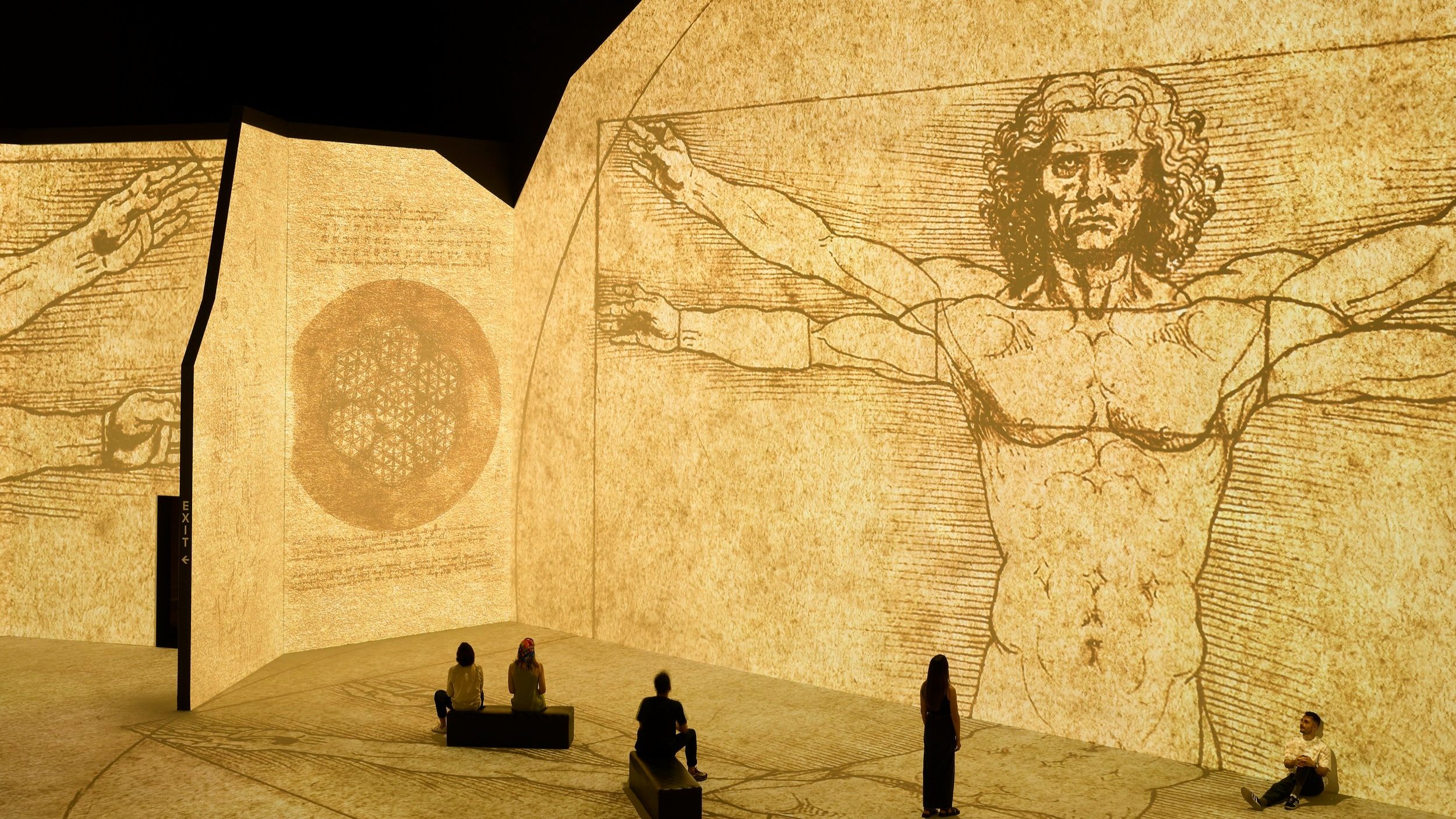Kandinsky: The Artist and His Legacy
Kandinsky - Colour Study. Squares with Concentric Circles (1913)
Wassily Kandinsky was a revolutionary artist who challenged traditional notions of representation and paved the way for new forms and techniques in modern art.
His use of colour and abstract composition, combined with his spiritual approach to art-making, established him as one of the most important figures of the early 20th century art scene.
In this article, I delve into the world of Kandinsky, exploring his techniques, vision, and impact on modern art. I examine the role of music in his artistic process, the significance of his use of colour, and his most famous paintings. I also take a look at where you can view Kandinsky's work in museums and galleries around the world, and why his influence continues to be felt in the art world today.
I have previously written about Kandinsky Circles as an art activity to carry out with children - that blog article can be read here.
Table of Contents
Kandinsky's Inspiration and Importance
The Effect of Kandinsky's Health on his Art
The significance of geometric shapes in Kandinsky's work
Musical Influences on Kandinsky’s Art
Kandinsky's Life and Career
Early life and education
Wassily Kandinsky was born in Moscow, Russia in 1866. His parents were both of aristocratic lineage, and his father was a successful tea merchant. Kandinsky's early years were filled with music, literature, and art.
He was an accomplished pianist and a lover of Russian folklore.
In 1886, Kandinsky enrolled at the University of Moscow, where he studied law and economics. However, he was more interested in art, and after completing his degree, he decided to pursue a career in painting.
He moved to Munich, Germany in 1896 to study at the Academy of Fine Arts.
Munich and Kandinsky’s involvement in the Blue Rider movement
Kandinsky - cover of Der Blaue Reiter almanac, c. 1912
In Munich, Kandinsky was exposed to a new world of art and culture. He was particularly fascinated by the work of the Impressionists, and he began to experiment with colour and form in his paintings.
In 1901, Kandinsky founded the Phalanx group, a group of artists who aimed to promote modern art and to break away from the academic traditions of the time.
In 1909, Kandinsky co-founded the Neue Künstlervereinigung München (New Artists' Association of Munich), which aimed to provide a platform for modern artists. However, disagreements between members of the group led to Kandinsky and other artists forming a new group in 1911, called Der Blaue Reiter (The Blue Rider).
The Blue Rider was an influential group of artists who aimed to express spiritual truths through art.
Kandinsky's work during this period was characterised by his use of vibrant colours, abstract forms, and mystical themes. His art was seen as a departure from traditional representational art, and it was instrumental in the development of Abstract art.
Kandinsky continued to produce groundbreaking works of art until his death in 1944.
Today, he is remembered as one of the most important artists of the 20th century, and his contributions to the development of Abstract art continue to influence artists around the world.
Kandinsky's Inspiration and Importance
Influences on Kandinsky's Art, Including Spiritual and Mystical Beliefs
Kandinsky was deeply influenced by his spiritual and mystical beliefs, which played a significant role in shaping his artistic vision.
His interest in spirituality began in his youth, where he was introduced to theosophy, a religious movement that sought to unite science and religion. He later became interested in the works of the Russian mystic, Madame Blavatsky, whose ideas of spiritual evolution and unity of all religions greatly influenced him.
Kandinsky believed that art could be a tool for spiritual expression, and his works often reflected this belief.
His use of colour and form was not merely aesthetic but also symbolic, conveying spiritual and emotional meanings. For example, he believed that blue was the colour of the spiritual and that yellow represented warmth and joy.
Kandinsky's Role in the Development of Abstract Art
Kandinsky - Composition IV (1911)
Kandinsky is widely regarded as one of the pioneers of abstract art, a genre of art that prioritises the use of colour, form, and texture over realistic representation.
Kandinsky believed that abstract art could transcend the material world and access a deeper spiritual truth.
In 1911, Kandinsky published ‘Concerning the Spiritual in Art’, a seminal text that outlined his theories on art and its connection to spirituality. The book, which is still widely read today, was groundbreaking in its ideas and helped to establish Kandinsky as a leading figure in the abstract art movement.
Modern Artists Inspired by Kandinsky's Ideas and Techniques
Kandinsky's ideas and techniques have had a significant impact on modern art. His use of colour and form to express spiritual and emotional themes influenced the work of artists such as Mark Rothko and Jackson Pollock.
Kandinsky's emphasis on abstraction and the use of colour as a tool for emotional expression also paved the way for other artists to experiment with non-representational forms of art. His influence can be seen in the works of abstract expressionists such as Willem de Kooning and Joan Mitchell.
In addition to his artistic contributions, Kandinsky's ideas on the spiritual nature of art continue to be relevant today. His belief that art can be a tool for personal and societal transformation has inspired many artists and thinkers to explore their own spiritual dimensions of creativity.
The Effect of Kandinsky's Health on his Art
Kandinsky was a complex artist with a rich inner world. His artistic vision was closely linked to his experiences with synesthesia and his mental health.
Kandinsky's diagnosis of synesthesia and how it influenced his art
Kandinsky - Diagonal (1923)
Kandinsky was known to have synesthesia, a neurological condition that causes the stimulation of one sensory pathway to trigger an involuntary experience in another.
This diagnosis meant that Kandinsky could hear colours and see sounds. This unique sensory experience had a profound impact on his artistic style, as he sought to convey these sensations through his work.
Kandinsky's synesthesia allowed him to perceive the world in a way that was vastly different from other artists. He could translate the sounds of music into visual forms, creating paintings that were akin to musical compositions.
In his 1911 book, ‘Concerning the Spiritual in Art’, Kandinsky wrote extensively about his synesthetic experiences, stating that:
‘colour is the keyboard, the eyes are the harmonies, the soul is the piano with many strings’.
This quote exemplifies how Kandinsky's synesthesia was at the core of his artistic practice.
Kandinsky's art is known for its vivid use of colour, and it is believed that his synesthesia played a significant role in his colour choices. For example, Kandinsky associated the color blue with spirituality and the supernatural, which can be seen in his painting “Blue Rider”, a work that is considered a masterpiece of abstract art.
Kandinsky's synesthesia allowed him to create artworks that were not only visually stunning but also deeply personal and meaningful.
Kandinsky's mental health
Throughout his life, Kandinsky struggled with various mental health issues, which may have also influenced his artistic style. There is evidence to suggest that Kandinsky suffered from depression and anxiety, and he was known to have undergone psychoanalytic treatment in the later years of his life.
Some art historians have speculated that Kandinsky's mental health struggles may have influenced his move towards abstraction.
Kandinsky's mental health struggles may have also influenced the expressive and emotional quality of his paintings. His use of bold colours and dynamic lines reflect a sense of inner turmoil and intense emotion, which is characteristic of many artists who have experienced mental health issues.
Kandinsky's Painting Styles
Wassily Kandinsky was a master of colour, shape, and abstraction. His paintings are a testament to his creativity and artistic prowess. Throughout his career, Kandinsky developed various styles of painting, each with its unique characteristics and themes.
Kandinsky's paintings can be divided into three categories:
Impressions;
Improvisations; and
Compositions.
These categories represent different stages of his artistic development.
Kandinsky’s Impressions
Kandinsky - Blue Mountain (1908)
Impressions were the earliest type of painting produced by Kandinsky. These paintings were inspired by nature, and Kandinsky aimed to capture the essence of a particular scene or moment in time. Impressions are characterised by a muted colour palette and a focus on the natural world. In these paintings, Kandinsky sought to capture the mood and atmosphere of a particular scene, rather than its physical details.
Examples of Kandinsky's Impressions include "Blue Mountain" (1908) and "Landscape with Tower" (1913)
Impressions often include recognisable objects and forms, such as landscapes, trees, and flowers. However, these objects are simplified and abstracted to their essential elements.
Kandinsky’s Improvisations
Kandinsky - Improvisation Deluge (1913)
Improvisations are more abstract than Impressions. They are the result of Kandinsky's free-flowing and spontaneous creative process. Improvisations are characterised by bold brushstrokes, vibrant colours, and irregular shapes. These paintings are expressive and emotional, representing Kandinsky's innermost thoughts and feelings.
Kandinsky’s Compositions
Kandinsky - Composition VIII (1923)
Compositions are the most structured and deliberate of Kandinsky's paintings. They are the culmination of his artistic development, representing his efforts to create a new visual language. Compositions are characterised by geometric shapes, intricate patterns, and a harmonious balance of colour and form. These paintings are the purest expression of Kandinsky's ideas about art and spirituality.
Examples of Kandinsky's Compositions include “Composition VIII” (1923) and "Yellow-Red-Blue" (1925).
The significance of geometric shapes in Kandinsky's work
Why did Kandinsky paint shapes? Geometric shapes were a prominent feature in Kandinsky's work, and he believed that they had symbolic and spiritual significance. He believed that:
Kandinsky - Circles in a Circle (1923)
Circle - the circle represented the spiritual and the eternal; and
Square and Triangle - the square and triangle represented the earthly and the material.
Kandinsky often used these shapes to create a sense of harmony and balance in his work, juxtaposing them against one another to create a sense of tension and movement.
Kandinsky's use of shapes was not limited to their symbolic significance. He also used them as a compositional tool, manipulating them to create visual interest and to draw the viewer's eye around the canvas.
His use of geometric shapes and bold colours was influential in the development of abstract art, and his work continues to inspire artists today. Kandinsky's techniques and use of shapes were instrumental in his art and had a significant impact on modern art.
Musical Influences on Kandinsky’s Art
Kandinsky's unique artistic vision was heavily influenced by his love for music. The German-born Russian artist was an accomplished musician and composer before turning his attention to painting, and his love for music continued to play a crucial role in his artistic career.
Kandinsky believed that music and art were intertwined, and his paintings often evoke musical compositions through their use of colour, shape, and form.
The use of musical terminology in Kandinsky's artwork titles further reinforces the close relationship between music and art in his work. Titles such as ‘Composition’, ‘Improvisation’ and ‘Symphony’ suggest the musical nature of his paintings, while also highlighting Kandinsky's belief that art should be viewed as a form of expression in the same way that music does.
The importance of Wagner's opera 'Lohengrin' to Kandinsky
Wagner's opera “Lohengrin” is one particular piece of music that had a profound impact on Kandinsky's artistic vision.
Kandinsky - Composition VII (1913)
Kandinsky was deeply moved by the opera's use of music and visual elements to create a sense of transcendence and spiritual awe. The opera's ethereal landscapes and mystical themes resonated deeply with Kandinsky, and he began to incorporate similar motifs into his paintings.
The influence of “Lohengrin” can be seen in Kandinsky's early works, such as “Composition VII” which features a similar sense of otherworldliness. The painting's swirling shapes and bright colours create a sense of movement and rhythm that is reminiscent of the opera's music. Kandinsky's use of colour in "Composition VII" is also similar to the way Wagner used music to create a sense of emotional intensity and spiritual transcendence.
The following are some other of Kandinsky's artworks that have been said to be influenced by “Lohengrin”:
Composition VI (1913): This large-scale painting is a complex composition of abstract forms and colours. Kandinsky's use of musical terminology to describe his art is particularly evident in this work, as he referred to it as a symphony and saw it as a visual representation of the music of Lohengrin.
Improvisation 27 (Garden of Love II) (1912): This painting is a vibrant and colorful abstraction of a garden, with bold forms and vivid colors. The influence of Lohengrin can be seen in the painting's sense of romanticism and idealism, which were themes found in Wagner's opera.
Small Pleasures (1913): This painting is a playful and whimsical composition of abstract forms, with bright colors and lively movement. Kandinsky's use of musical terminology to describe his art is again evident in this work, as he referred to it as a "dance" and saw it as a visual representation of the music of Lohengrin.
The Blue Mountain (1908-1909): This painting is a bold and dynamic composition of geometric forms and colors. While it predates Kandinsky's exposure to Lohengrin, the influence of Wagner's opera can be seen in the painting's sense of grandeur and emotional intensity.
The Influence of Mussorgsky on Kandinsky
Kandinsky - Impressions III (Concert) (1911)
Kandinsky's interest in music was not limited to Wagner. Kandinsky was also a great admirer of the Russian composer Modest Mussorgsky.
Mussorgsky's music, with its unconventional harmonies and rhythms, spoke directly to Kandinsky's own artistic sensibilities. In fact, Kandinsky once wrote that listening to Mussorgsky's "Pictures at an Exhibition" was like "gazing at a painting." He saw a direct correlation between the composer's ability to evoke vivid images through sound and his own artistic goals.
This influence can be seen in Kandinsky's own artwork, particularly in his later abstract paintings. His use of colour, texture, and form can be seen as a visual expression of the same emotional and spiritual ideas that Mussorgsky conveyed through his music.
Wassily Kandinsky was heavily influenced by the music of Modest Mussorgsky, particularly his composition “Pictures at an Exhibition”. The following are some of Kandinsky's artworks that have been said to be influenced by Mussorgsky:
Impression III (Concert) (1911): This painting depicts a colorful, abstract representation of a concert hall, with swirling forms and bold colors. Kandinsky saw music as a direct inspiration for his art, and this painting is often seen as a direct response to Mussorgsky's music.
Improvisation 26 (Oars) (1912): This painting is a vivid abstraction of a boat race, with sweeping strokes of color and dynamic forms. Kandinsky's use of movement and energy in this painting is said to reflect the same sense of drama and excitement found in Mussorgsky's music.
Yellow-Red-Blue (1925): This painting is one of Kandinsky's most iconic works, featuring a bold, geometric composition of primary colours. The use of colour and form in this painting has been said to be influenced by Mussorgsky's use of unconventional harmonies and rhythms.
Kandinsky's Use of Colour
Kandinsky's use of colour in his paintings is one of the defining features of his art.
His bold and vivid colours, combined with his dynamic use of line and shape, created a sense of movement and rhythm that is unmatched in the art world. Kandinsky believed that colours had spiritual and emotional meanings, and he used them to convey a range of emotions and ideas in his paintings.
Colour Synesthesia
Kandinsky was fascinated with colour theory and believed that colours had a psychological effect on the viewer. He used colour to create harmony and contrast in his paintings, often using vibrant hues to express emotions and moods.
One of his famous techniques was “colour synesthesia” where he would associate colours with sounds and other sensory experiences. Kandinsky also experimented with texture in his paintings, using thick impasto to create a sense of depth and dimension.
In terms of composition, Kandinsky often used abstract forms to convey emotion and meaning. He believed that painting was a spiritual activity and that it was his responsibility to create art that would uplift and inspire the viewer. He used balance, rhythm, and movement to create a sense of unity in his work, often drawing inspiration from music and dance.
Discussion of Kandinsky's use of colour in his paintings
Kandinsky's use of colour is often described as “expressionist”.
Kandinsky - Yellow Accompaniment (1924)
Kandinsky believed that colours had a life of their own and could be used to create a sense of movement and rhythm in his paintings. He used a wide range of colours, from bright and vibrant hues to more subdued and muted tones.
Kandinsky's use of colour was not limited to a particular style or period of his career. He continued to experiment with different colours and combinations throughout his life, and his paintings reflect the evolution of his artistic vision.
Kandinsky believed that the different colours had the following characters:
What did red mean to Kandinsky? Kandinsky believed that red represented passion and energy.
What did blue mean to Kandinsky? Kandinsky believed that blue was the colour of spirituality and calmness.
What did yellow mean to Kandinsky? Kandinsky believed that yellow was the colour of joy and happiness.
What did green mean to Kandinsky? Kandinsky believed that green represented nature and growth.
Kandinsky - Yellow-Red-Blue (1925)
In some of his paintings, Kandinsky used colours in combination to create a particular effect. For example:
In ‘Composition VIII’, he used a combination of blue, red, and white to create a sense of movement and dynamism, while also conveying a sense of spiritual transcendence.
In ‘Yellow-Red-Blue’, he used a combination of the primary colours to create a sense of harmony and balance.
Kandinsky often used colours in unexpected ways, such as using green to represent a sense of unease or using black to represent a sense of stillness and calmness. His bold and innovative use of colour paved the way for future generations of artists, inspiring them to explore the emotional and spiritual meanings of colour in their own work.
Where can you view Kandinsky's artworks?
Kandinsky's artwork can be viewed in many museums and galleries around the world. Whether you're interested in seeing his early representational works or his later abstract pieces, there are plenty of opportunities to experience Kandinsky's art up close.
USA Galleries with Kandinsky Artworks
The largest Kandinsky collections in USA can be found in the following museums:
The Solomon R. Guggenheim Museum and Museum of Modern Art (MoMA), both in New York - each have extensive Kandinsky collections and regularly hold exhibitions to display these works. Check their websites for up to date exhibition details.
Metropolitan Museum of Art, New York - Metropolitan Museum of Art, New York has several Kandinsky artworks. “Improvisation 27 (Garden of Love II)” is currently on display.
Art Institute of Chicago, Chicago - Over ten Kandinsky artworks are on display in the Art Institute of Chicago.
Norton Simon Museum, Pasadena, California - The artwork titled “Open Green” is on display.
UK Galleries with Kandinsky Artworks
Frameless, Marble Arch, London - This immersive gallery and exhibition features iconic masterpieces from some of the world’s greatest artists, including Kandinsky, as well Cezanne, Monet, Dalí, Van Gogh, Canaletto, Rembrandt and Klimt, amongst others. For more details about this exhibition, read here.
The Courtauld, London - The artwork referred to as “Untitled, 1916” is available to view.
Tate Liverpool - The artwork titled “Cossacks 1910-1” is available to view. For more information about The Tate, read here.
Scottish National Gallery of Modern Art - There are a number of prints available in the Print Room to view including “Improvisation 1911” and several from “Kleine Welten III [Small Worlds]” series.
European Galleries with Kandinsky Artworks
For those in Europe, there are several museums and galleries that house significant collections of Kandinsky's artwork. The largest Kandinsky collections in Europe can be found in the following galleries:
Städtische Galerie im Lenbachhaus, Munich
Thyssen-Bornemisza National Museum, Madrid
Kandinsky's Continued Relevance Today
Wassily Kandinsky was a pioneering artist who helped shape the direction of modern art in the early 20th century. His bold use of colour, abstract compositions, and spiritual approach to art-making continue to inspire artists and art enthusiasts to this day.
Kandinsky's impact on modern art cannot be overstated. His work helped to establish abstraction as a legitimate form of artistic expression, paving the way for future generations of artists to explore new forms and techniques. His use of colour and form challenged traditional notions of representation, ushering in a new era of artistic experimentation.
Kandinsky was also instrumental in the development of the Expressionist movement, which emphasised the emotional and spiritual aspects of art-making. His belief in the transformative power of art and his commitment to the idea of the artist as a spiritual leader had a profound impact on his contemporaries and on later generations of artists.
Despite the fact that Kandinsky's work is now over a century old, it remains relevant and inspiring to artists today.
FAQS
Where was Kandinsky from? Wassily Kandinsky was born in Moscow, Russia on December 16, 1866, and he grew up in various cities in Russia, including Odessa and Moscow.
What is unique about Wassily Kandinsky’s paintings? Kandinsky's paintings are unique for their use of vibrant colors and abstract, non-representational forms that evoke emotions and spirituality.
What is Kandinsky style of art? Kandinsky's style of art is often referred to as abstract expressionism, which emphasises the expression of emotional and psychological states through non-representational forms.
What technique does Kandinsky use? Kandinsky used a variety of techniques in his paintings, including oil, watercolour, and gouache, as well as different types of brushstrokes and layering.
What did Kandinsky study? Kandinsky studied art formally at the Academy of Fine Arts in Munich and later at the School of Applied Arts in Munich.
How does Kandinsky use synaesthesia in his artworks? Kandinsky used synaesthesia in his artworks by assigning colours to specific musical notes, which he believed could create a harmonious and emotional experience for the viewer.
What do colours sound like according to Wassily Kandinsky? According to Kandinsky, colours have their own unique sound and can evoke different emotional responses in the viewer.
Why did Kandinsky paint circles? Kandinsky painted circles to represent the spiritual and cosmic aspects of art, which he believed could communicate universal truths and emotions.
Why did Kandinsky paint shapes? Kandinsky painted shapes as a way to express emotions and ideas in a non-representational way, emphasising color and form over traditional figurative representation.
What is the meaning of black lines for Kandinsky? The black lines in Kandinsky's paintings are often used to emphasise the structure and composition of the work, as well as to create contrast and tension with the vibrant colours.
I hope you have found this blog post useful, if you would like to get in contact, please email me at sarahransomeart@gmail.com.
